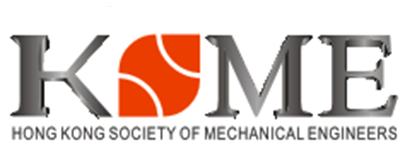Cape Town, South Africa
Cape Town, the second largest city in South Africa, the legislative capital of South Africa, the capital of the Western Cape Province, an integral part of the Cape Town metropolitan area, the South African Parliament and many government departments are also located in the city. Cape Town is famous for its natural beauty and its docks.
The city is rolling out on the back of the mountains, the western outskirts of the Atlantic Ocean, the southern suburbs into the Indian Ocean, living in the meeting of the two oceans. There are many old colonial buildings in the city, located near the Grand Square, Cape Town Castle, built in 1666, is the oldest building in the city. Most of its construction materials came from the Netherlands, and it was later used as the governor's residence and government office.
Originally developed around the docks, Cape Town became the first permanent European settlement in sub-Saharan Africa, as merchant ships from the Netherlands bound for East Africa, India, and Asia would pass through the area to resupply. Later, the Europeans also established their first military base, Fort Good Hope, and Cape Town was the largest city in southern Africa before the founding of Johannesburg and the discovery of large quantities of gold and diamonds in the Transvaal.
- History and culture: The multi-ethnic and multi-cultural social structure has made the local religious beliefs pluralistic, and the major world religions have influence in the region. The white and colored people mostly believe in Christianity, the black people believe in primitive religions, the Asian people mostly believe in Hinduism, Islam and Christianity, and the minority believe in Confucianism, Buddhism, Jainism and Zoroastrianism.
South African social etiquette can be summed up as "black and white", "mainly British". The so-called "black and white" refers to: restricted by race, religion, customs, black and white South Africans obey the social etiquette is different; British style mainly refers to: in a long historical period, white people controlled the political power in South Africa, and white social etiquette, especially British social etiquette, was widely popular in South African society. In social situations, the common greeting etiquette adopted by South Africans is to shake hands, and they address their partners mainly "Sir", "Miss", or "Mrs". Among the black tribes, especially in the vast rural areas, black South Africans often show a different style from the mainstream of society.
- Special food: If you are interested in the food of the local people, you can go to the second floor of the train station, snack street, there are grilled sausages, curry rice, hamburgers, etc. In addition, some coffee shops in Adderley Street and George can taste Cape style lunch with about 1SR. There are also museums and restaurants in CompanyGarden. But these restaurants close in the evening. If you are a thrifty person, it is better to cook your own food or buy some things than to eat at a bad restaurant. There are also many restaurants and convenience stores that close late around the Cape. There is a special cuisine, apricot flaky Malay snacks, dried, sugar-stained fruit, chocolate, creme candies, coffee, black tea, seasonings can be bought separately, as well as cooked dishes, canned, cheese, etc., those who do not like sweets are also worth a visit. In the suburbs, there are also farms that sell homemade jam and canned food.
The breakfast options are varied: eggs, bacon, sausage, mushrooms, grilled salmon and salmon, fried corn, flapjacks, pasties and coffee, toast and jam, porridge and cheese.
- Local characteristics: Ostrich egg handicraft—Ostrich eggs, known as the "king of a hundred eggs", are a specialty of Cape Town, and clever locals use ostrich eggs to make a variety of crafts, such as various paintings on the ostrich eggs, making ostrich eggs carved crafts and other different ornaments. Visitors can take some home. It's very memorable.
Ivory carving and wood carving—The ivory and wood carvings are typical of Cape Town, and the skills of the artisans are fully reflected in this craft. It may add some weight to your backpack, but when you return to your home country, seeing them on your writing desk will remind you of your good time in South Africa.




